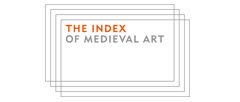ScholarWorks > Arts & Sciences > Medieval Institute Publications > STUDIES_IN_ICONOGRAPHY > Vol. 43 (2022)
Abstract
THE CRYPT CAPITALS OF Saint-Bénigne in Dijon (1001–1018) are often considered among the most inventive of early Romanesque figurative capitals. This article demonstrates that the Benedictine reform undertaken at the monastery by Abbot William of Volpiano in the last decade of the tenth century provides a context not only for a new interpretation of the iconography of two capitals facing St. Bénigne’s tomb, but also for the genesis of the contorted monstrous imagery characteristic of the Romanesque style. The iconography of the capitals resembles John of Fécamp’s description of hell in the Confessio theologica. The stylistic complexity of the carved forms sustains the emotional engagement that John deemed necessary for repentance and recalls Odo of Cluny’s prescription in the Occupatio of using devices to maintain engagement. Similarities with Abbot William’s reform in Dijon and the related texts of these Benedictine reformers suggest that the capitals were designed to kindle fear as the first step of repentance in a monastic program of spiritual perfection.
Recommended Citation
Marino Malone, Carolyn
(2022)
"Monastic Reform and Romanesque Figurative Capitals at Saint-Bénigne in Dijon,"
Studies in Iconography: Vol. 43, Article 2.
Available at:
https://scholarworks.wmich.edu/studies_in_iconography/vol43/iss1/2


